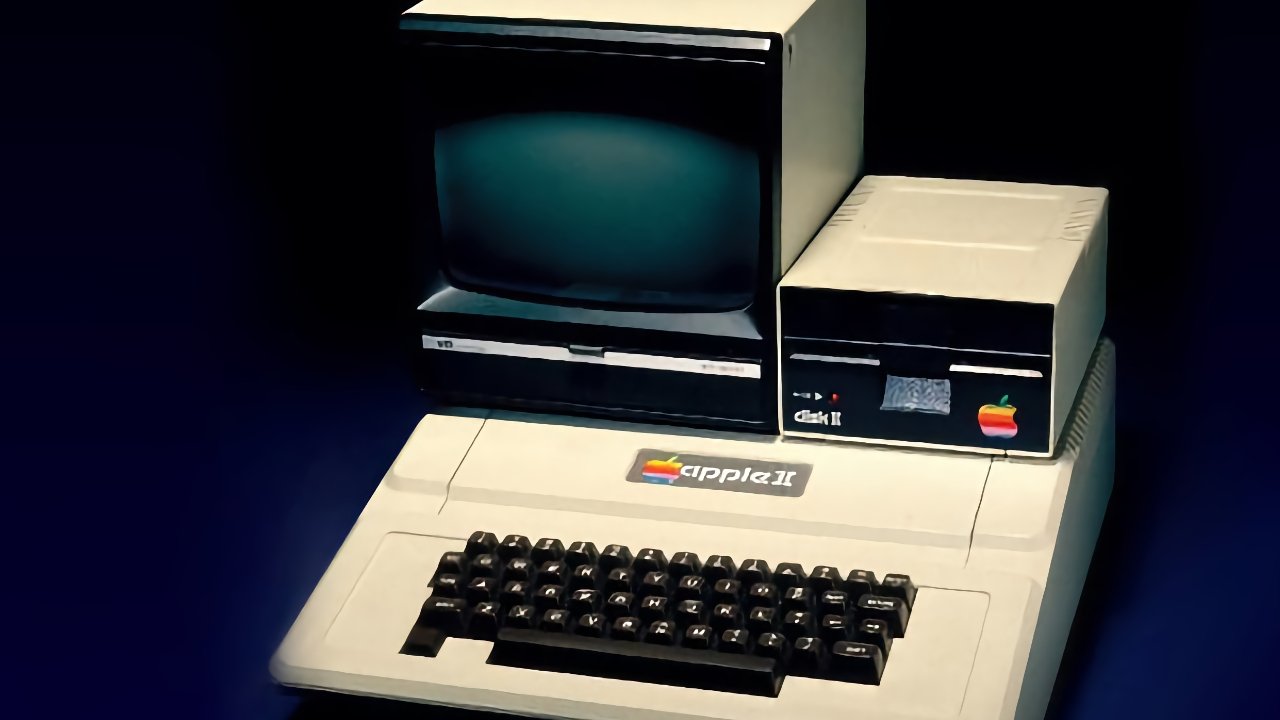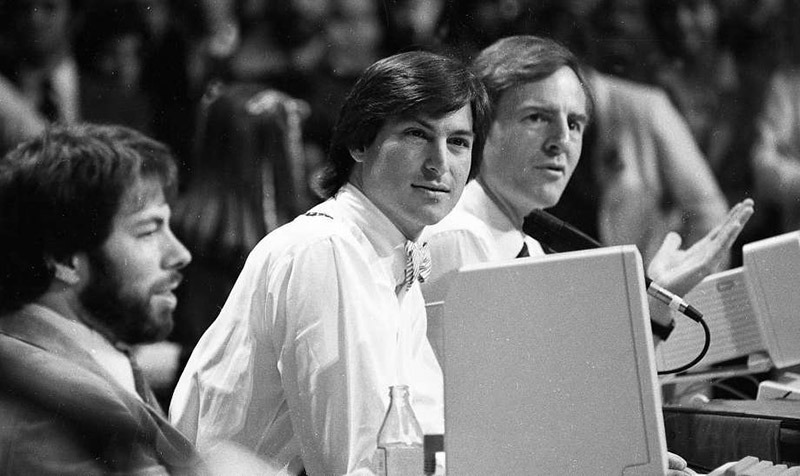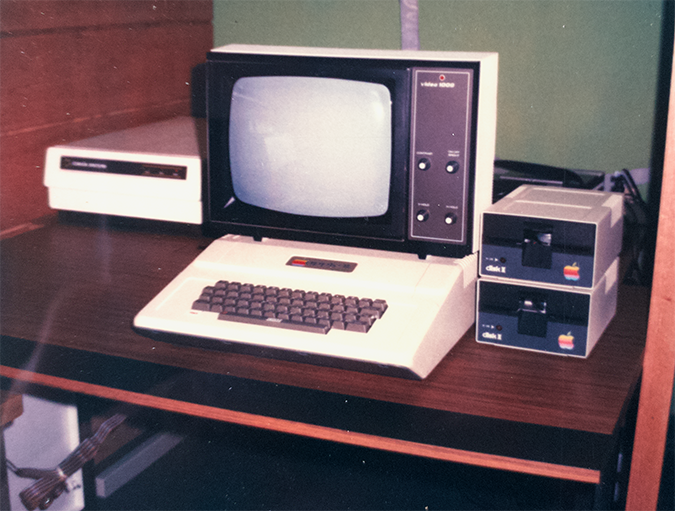It's the Apple II that made the company, kept it afloat, and even made it a cult success — but it was also the Apple II that Steve Jobs tried so hard to kill off with the Mac. It's the little machine that could, did, and for its fans, still does.
The iMac saved Apple, and the iPod ignited the company's incredible success — but it was another machine entirely that got it started. The Apple II made the company, kept it going, and started the trend of Apple gaining fans as much as just a lot of customers.
Where the Apple I had been Steve Wozniak's hobbyist project, the Apple II was his hobbyist project with Steve Jobs pushing him on. Apple II was their company's first consumer product, as in a computer that was designed to be used right out of the box, instead of having to be assembled by technology fans.
Central to that was how, unlike the Apple I, this new computer came in its own case. Woz was most concerned with making sure that the Apple II had expansion slots, while it was Jobs who pressed for it to be in a casing — eventually.
Jobs had tried selling the bare motherboards to Paul Terrell of The Byte Shop, but Terrell would only buy complete units. He was willing to buy fifty of them, though, so he got what he wanted — and the Apple II got a case.
That machine in that case became what was truly American's first home computer as we know it.
While we do remember how important the Apple II was to the company, at this distance it's easy to forget just how revolutionary it was for users — even as Woz mostly still wanted to impress the famous Homebrew Computer Club.
"If you can take it down to the club and show a 30-chip circuit instead of 32, that's a little bit of a plus," Woz explained in a 1984 speech to the Denver Apple Pi computer club. "The computer was not being designed to be a product and was not being designed to be sold nearly as much as it was being designed to impress."
Apple launched the Apple II on April 17, 1977, and the following month saw a highly technical, six-page technical article in Byte magazine with Woz detailing his design. It was another era — not only did Byte include system bus diagrams for you to pore over, it also printed Apple's postal address.
"The latest result of my design activities is the Apple II," he wrote from 20863 Stevens Creek Boulevard, Cupertino, CA 95014. "To me, a personal computer should be small, reliable, convenient to use and inexpensive."
The Apple II was all of these things, and if he built it to impress hobbyists, it soon garnered a wider circle of fans — specifically because this machine had a startling number of firsts.
"It was the first one to have BASIC included in ROM, the very first one," Woz continued in his Denver speech. "The first one ever to have a plastic case. The first one ever to be completely assembled, all you've got to do is plug it in the wall. The first one ever to have 48K of RAM built-in on the motherboard. It was unheard of. It was the first one to have color, the first one to have sound... graphics..."
In a separate 1990s interview quoted on the fan site apple2history.org, Woz explained just why his machine had ended up having all of these firsts. None of them were particularly planned, he says, and much of them came from him adding what he wanted, when he wanted it.
"A lot of features of the Apple II went in because I had designed Breakout for Atari," he said. "[That] was the reason that color was added in first — so that games could be programmed. I sat down one night and tried to put it into BASIC... I got this ball bouncing around, and I said, 'Well, it needs sound,' and I had to add a speaker to the Apple II."
"Obviously you need paddles [for a game]," he continued, "so I had to scratch my head and design a simple minimum-chip paddle circuit, and put on some paddles. So, a lot of these features that really made the Apple II stand out in its day came from a game, and the fun features that were built in were only to do one pet project, which was to program a BASIC version of Breakout and show it off at the club."
If all of this made the Apple II appealing to Woz, the Homebrew club, and consumers, it was software to handle numbers that truly made it fly for everyone else. For the very first spreadsheet program ever created was VisiCalc for the Apple II, and that was world-changing.
Before its 1979 release, the word "spreadsheet" meant a large paper ledger document that companies relied on. After its 1979 release, it meant software and no one remembers physical ledgers.
"There have been two real explosions that have propelled the [technology] industry forward," Steve Jobs said in a 1996 interview for Japan's NHK network. "The first one... was the spreadsheet. I remember when Dan Bricklin, who ran the company that marketed the first spreadsheet, walked into my office at Apple one day and pulled out this disc from his vest pocket, and said I have this incredible new program, I call it a visual calculator. And that's what really drove, propelled the Apple II to the success it had achieved."
Before we make the Apple II sound like a machine you would want to buy today, you wouldn't. For all its firsts, it had a major deficiency in that only supported uppercase letters. If you bought an Apple II in 1977, you could only type on it in capitals. Later there were third-party expansion cards that added the ability to show lowercase too, but it wasn't until 1983 and the Apple IIe that it shipped with this feature as standard.
That was six years after the launch and if it seems impossible now that you could use a computer that didn't have this, back then it was more unusual that the computer could still be around. This was a time of incredible numbers of incompatible computers from astonishing numbers of different companies.
And it was also a time when each of those companies would produce new machines that were incompatible with their old ones. That's perhaps where Steve Wozniak and Steve Jobs saw things differently. Woz wanted to make a computer that lasted forever and, at the time, Jobs was expecting to replace it.
Even though the Apple II, and its variations, originally outlasted Jobs at Apple, he continued to believe that technology should be replaced as he founded NeXT.
"All computer architectures have about a ten-year life," Jobs said at the launch of NeXT Computer in 1988, "and that means if they're really revolutionary when they come out they don't run existing software."
The Mac, for instance, had not run Apple II software. Jobs was so disinterested in this fact that when he made a presentation at the famous Apple II Forever event earlier in 1984, he chose to spend most of his time talking about the then-new Mac.
At that point, the Mac was three months old and for all Jobs's massaging of the numbers, was failing. And also at that point, the Apple II was seven years old and so successful that it was still Apple's primary source of income.
Although that Apple II Forever event was really the launch of the Apple IIc, a version which somewhat failed to match the success of its predecessors. Arguably that event was also a presage of the Apple of the future, too, as it was large-scale, lavish, and expensive. It also had its own theme song, which you can only hope sounded good at the time. It was the 1980s, after all.
But then suddenly it was the 1990s, and still the Apple II was selling. By this point, it had gone through very many variations, but the final one was the Apple IIe. It ceased production in November 1993.
The Apple II, in its various forms, had survived for 16 years. It had weathered IBM launching the IBM PC, it had easily weathered Apple launching the Lisa, and even then the Macintosh. And it had, just about, survived the Apple III, which was as much of a calamitous failure as the II had been a giant success.
We might not recognize the company that Apple was in 1977 when it created the Apple II, as its hobbyists' roots are long gone. But we definitely wouldn't recognize the Apple of 1993 when it killed off the Apple II. Back then, Apple was on a downward spiral — and Steve Jobs would not return to save it for another four years.
Keep up with AppleInsider by downloading the AppleInsider app for iOS, and follow us on YouTube, Twitter @appleinsider and Facebook for live, late-breaking coverage. You can also check out our official Instagram account for exclusive photos.
 William Gallagher
William Gallagher








-m.jpg)






 Andrew Orr
Andrew Orr
 Malcolm Owen
Malcolm Owen


 Wesley Hilliard
Wesley Hilliard







-m.jpg)




35 Comments
I was one of those who stuck with the Apple II line as long as I could. The end of the line was the Apple IIGS in 1986, two years after the Macintosh was introduced. GS/OS was an attempt at putting the Mac GUI on an Apple II series. I bought my IIGS shortly after it came out and was very pleased with its performance and GS/OS. I finally made the jump to the Mac when I bought a Power Mac 8100 with all the bells and whistles. I believe it was the Power Mac 7100 that started out with an internal codename of Carl Sagan, Sagan sued and the codename changed to “Butthead Astronomer”. Sagan sued again.
>
Accurate but there lots of third-party 80-column terminal cards that allowed upper and lower case that were available before the IIe in 1983. They generally went into slot #3 and were kind of standardized. Doing a brief search, it looks like the availability started around 1980.
I recently found some Polaroid pics I took at my first Apple dealership in 1980. The one that interests me is the one that made my career: an Apple ][ with a 10Mb Corvus hard disk. That's it over on the left. Corvus made the first hard disks available for microcomputers, and the Apple version had Omninet, a network that ran on flat ribbon cables so multiple computers could share the hard drive. You can see the cable in the lower left corner of this pic. I remember selling multiuser database with DBMaster, businesses loved the Apple ][ for simple databases, it was the type of app that broke the Apple ][ out of the Visicalc model and into the networked world. Soon after this, I left retail and worked in software development.
